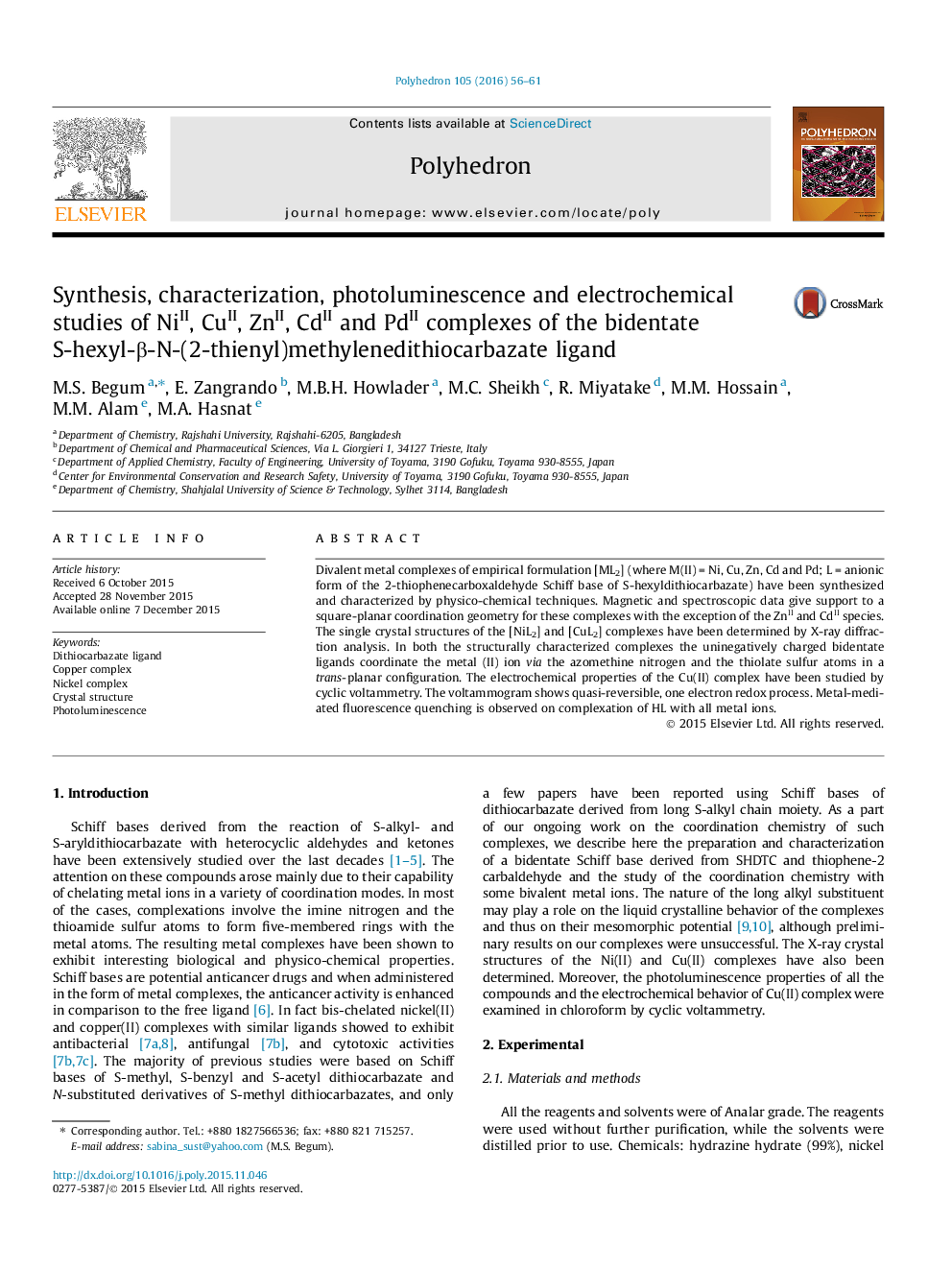| Article ID | Journal | Published Year | Pages | File Type |
|---|---|---|---|---|
| 1334289 | Polyhedron | 2016 | 6 Pages |
Divalent metal complexes of empirical formulation [ML2] (where M(II) = Ni, Cu, Zn, Cd and Pd; L = anionic form of the 2-thiophenecarboxaldehyde Schiff base of S-hexyldithiocarbazate) have been synthesized and characterized by physico-chemical techniques. Magnetic and spectroscopic data give support to a square-planar coordination geometry for these complexes with the exception of the ZnII and CdII species. The single crystal structures of the [NiL2] and [CuL2] complexes have been determined by X-ray diffraction analysis. In both the structurally characterized complexes the uninegatively charged bidentate ligands coordinate the metal (II) ion via the azomethine nitrogen and the thiolate sulfur atoms in a trans-planar configuration. The electrochemical properties of the Cu(II) complex have been studied by cyclic voltammetry. The voltammogram shows quasi-reversible, one electron redox process. Metal-mediated fluorescence quenching is observed on complexation of HL with all metal ions.
Graphical abstractIn this study, the N,S-Schiff base ligand and various divalent metal complexes were prepared and characterized. Molecular structures of Cu(II) and Ni(II) complexes were determined by single crystal X-ray diffraction studies.Figure optionsDownload full-size imageDownload as PowerPoint slide
